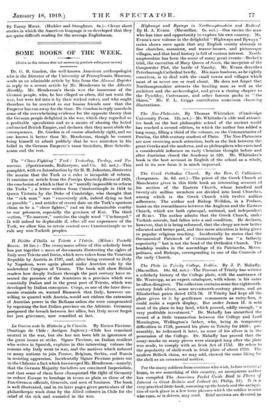The Plate in Trinity College, Dahlia. By J. P. Mahaffy.
(Macmillan. lOi. Od. net.)—The Provost of Trinity has written a scholarly history of the College plate, with the assistance of Mr. Westropp, as an expert cataloguer, with whom :n his notes he often disagrees. The collection contains some fine eighteenth- century Irish silver, some seventeenth-century pieces, and an Elizabethan paten dated 1575-76. If Trinity had kept all the plate given to it by gentlemen commoners as entry-fees, it could make a superb display. But under James H. it sold most of its plate to buy land, which proved, oddly enough, "a very profitable investment." Dr. Mahaffy has unearthed the record of a little transaction between the College and Lord Momington, Wellington's father, who, being in temporary difficulties in 1759, pawned his plate to Trinity for 5659 ; pre- sumably, he redeemed it later, as none of his silver is in the possession of the College. Dr. Mahaffy has proved that the assay-marks on many pieces were stamped long after the plate was made, to comply with an Irish Act of 1752. He refers to the popularity of shell-work in Irish plate of about 1750. The modern Belleek china, we may add, allowed the same liking for the shell as an ornamental motive.


































 Previous page
Previous page